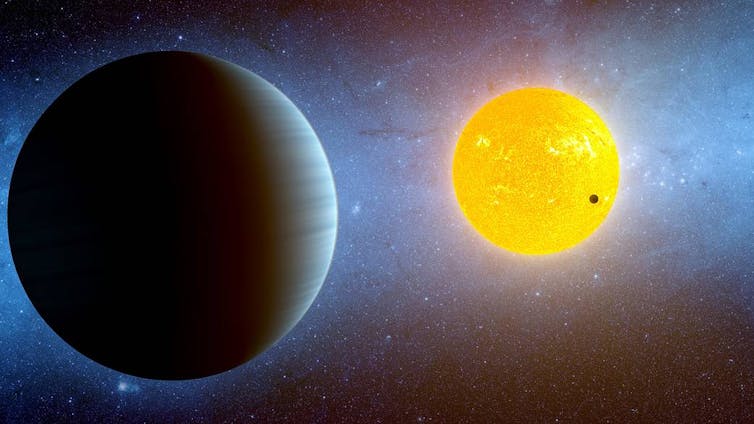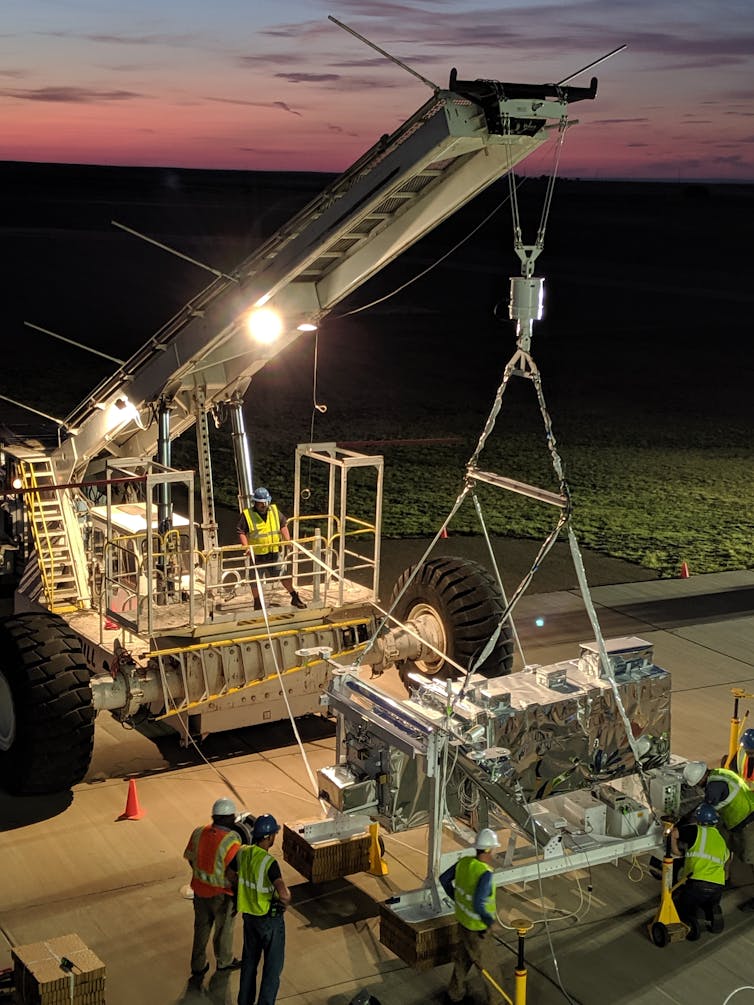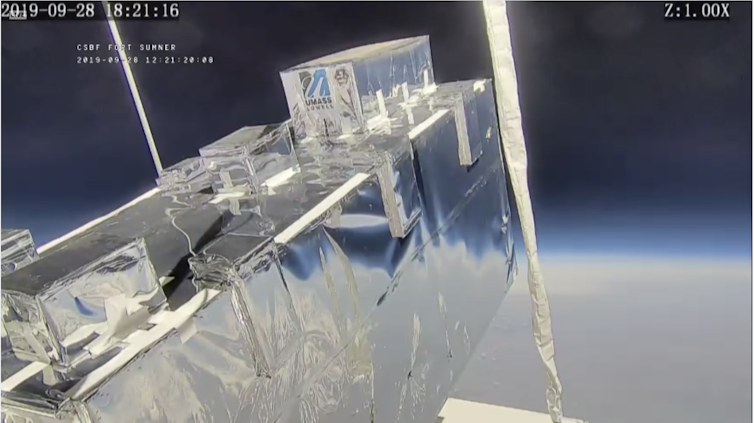Perhaps you remember the opening scene of “Harry Potter and the Sorcerer’s Stone” that took place on Privet Drive. A bearded man pulled a mysterious device, called a deluminator, from his dark robe and one by one the lights from the street lamps flew into it.
For the last decade or more, Muggles around the world – including me – have been busy designing and perfecting a similar device called a coronagraph. It blocks light from stars so scientists can take pictures of planets orbiting them – the exoplanets.
More than 500 years ago Italian friar Giordano Bruno postulated that stars in the night sky were like our Sun with planets orbiting them, some of which likely harbored life. Starting in the 1990s, using ground-based and satellite observations astronomers have gathered evidence of the existence of thousands of extra-solar planets or exoplanets. The discovery of exoplanets earned the 2019 Nobel Prize in Physics.
The next major milestone in exoplanetary research is imaging and characterizing Jupiter-sized exoplanets in visible light because imaging Earth-size planets is much more difficult. However, imaging exo-Jupiters would show that astromomers have all necessary tools to image and characterize Earth-size planets in the habitable zones of nearby stars, where life might exist. Space missions capable of imaging exo-Earths in their habitable zones, such as Habitable Exoplanet Observatory or HabEx and Large UV/Optical/IR Surveyor or LUVOIR, are currently being designed by scientists and engineers around the globe and are at least a decade away from their flight.
In preparation for these flagship-class missions, it is critical that key technologies and software tools are developed and validated. A coronagraph is essential to all of these imaging efforts.
I am a professor of physics and lead a research group that has designed many experiments that have flown on NASA missions. For the last decade or so, our team has been developing technologies needed to directly image and characterize exoplanets around nearby stars and test them aboard rockets and balloons before they can be selected for flight on major space missions.

Imaging exoplanets in visible light
Even though we know about the existence of over 4,000 exoplanets, most were detected using indirect methods such as the dimming the light of the parent star when a planet passes in front and blocks some of its light – just like the recent transit of Mercury. This is the technique employed by the Kepler and Transiting Exoplanet Survey Satellite or TESS missions. The 2019 Nobel Prize winners used another indirect method, that relies on the measurement of minute and periodic motion of stars caused by planets orbiting them. But a photograph of an exoplanet, with characteristics similar to those in our Solar System, has not yet been taken.
Imaging exoplanets is hard. For example, even a huge planet like Jupiter is a billion times dimmer than the Sun. And when seen from far away, the Earth is 10 times dimmer than Jupiter. But the difficulty of imaging exoplanets is not because they are dim – large telescopes including the Hubble Space Telescope have imaged much fainter objects.
The challenge of imaging exoplanets has to do with taking a picture of a very faint object that is close to a much brighter one. Since the stars and their planets are far away, when photographed they appear as one bright spot in the sky, just like the headlights of a car look like one bright light from a distance. So, the challenge of imaging even the nearest exoplanet is akin to a person in California taking a picture of a fly 10 feet away from the bright light of a lighthouse in Massachusetts.
My research group recently flew a high-altitude balloon experiment named Planetary Imaging Concept Testbed Using a Recoverable Experiment – Coronagraph (PICTURE-C) that tested the coronagraph’s ability to work in space to image exoplanets and their environments.

Key components of PICTURE-C instrument
PICTURE-C’s coronagraph creates artificial eclipses to dim or eliminate starlight without dimming the planets that the stars illuminate. It is designed to capture faint asteroid belt like objects very close to the central star.
While a coronagraph is necessary for direct imaging of exoplanets, our 6,000 pound device also includes deformable mirrors to correct the shape of the the telescope mirrors that get distorted due to changes in gravity, temperature fluctuations and other manufacturing imperfections.
Finally, the entire device has to be held steady in space for relatively long periods of time. A specially NASA-designed gondola called Wallops Arc Second Pointer (WASP) carried PICTURE-C and got us part way. An internal image stabilization system designed by my colleagues provided the “steady hand” necessary.

The maiden flight of PICTURE-C
After many tests to demonstrate that all systems were ready for flight our team launched PICTURE-C on the morning of September 29, 2019 from Ft. Sumner, New Mexico.
After the 20-hour test flight confirming that all systems worked well, PICTURE-C returned to the Earth using its parachute to land softly. The experiment has been recovered and returned to our laboratory. PICTURE-C wasn’t supposed to actually discover any exoplanets on its first test run. But it will fly again on another balloon when it will photograph several stars to explore if any of them have asteroid belts. These would be easier to see, and if we are lucky, it will snap a shot of a Jupiter-sized planet in September 2020.
0 Response for the "A real-life deluminator for spotting exoplanets by reflected starlight"
Post a Comment